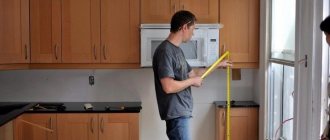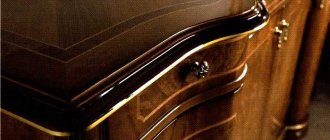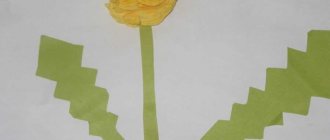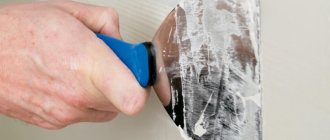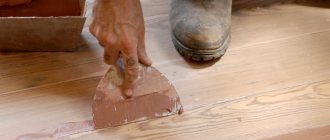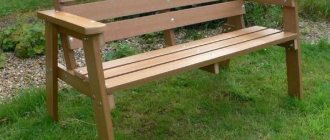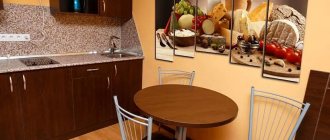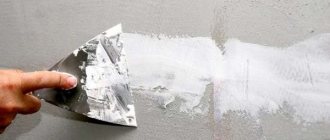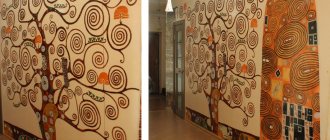Smoothly plastered walls are the dream of beginners and the reality of professionals. Nothing can replace years of experience, but you can achieve high-quality results on your own. The main thing is to know the basics of the puttying process. This article will talk about how to get a smooth surface after puttying and what is needed for this? In particular, the types of mixtures are considered and it is told when to choose which one, how to clean and prepare the wall for puttying, what methods of puttying there are, and what professionals advise.
Required Tools
The process of applying putty is simple, but it requires the use of special tools. A drill with a mixer attachment is required for mixing. It will come in handy when the master dilutes the dry powder with water. While it is mixed with water, lumps will form in the container. To get rid of them and make a homogeneous mixture, you need a professional nozzle.
The second tool required is one spatula or a whole set. Experts recommend using at least two spatulas during the puttying process. A wide tool of 40-50 cm will be useful for applying the main coating and a small spatula for correcting small irregularities. The smaller the spatula, the more hard-to-reach places you can treat with the building mixture. If you have experience in construction work, you can use a trowel to putty walls - a construction accessory that allows you to smooth the surface.
In order for the paint layer to adhere firmly to the surface, it must be primed after puttying. After priming, the wall will be covered with a thin film. For this you need rollers and brushes.
You need a small spatula like this Source allremont59.ru
In order for the mixture to lie evenly, it is necessary to apply test beacons to the surface before starting work. They are made using a laser or spirit level. But sometimes even after applying the coating, the wall turns out to be uneven. Then a rule will be needed. Preferably a long metal one, because it is convenient for them to level thick layers.
Dried wall putty can be rubbed down if you want to get a spectacular and beautiful coating. To obtain a textured finish, sandpaper or fine sandpaper is needed. 240-grit sandpaper is suitable for grouting the finishing putty. If the farm has a manual skinner, then it is worth using it. The tool is a device that has a handle with special clamps for attaching the skin. It makes the process of processing the wall easier.
Be sure to have special clothing for work. It is necessary to protect your hair with a headscarf and your hands with gloves. To prevent dust or small particles of the dry mixture from entering the respiratory tract, you need to work in a mask.
Security measures
During work, you need to protect your skin and head from putty. To do this, you will need clothing that covers your body and a scarf or cap on your head. During mashing, care must be taken to ensure that dust does not get into the eyes, nose and mouth. Special respirators are sold to help protect the respiratory system. You can purchase goggles to protect your eyes. All this can be found in construction stores. If work is carried out at height, then care must be taken to securely secure the scaffolding and structures.
If the mixture gets on the skin, it should be washed off with water and then treated with cream. If dust from the putty gets into your eyes or respiratory tract, you should consult a doctor.
Puttying work is a rather labor-intensive process that requires some experience, but if you do everything competently and carefully, the result will be of high quality, and you can be proud of the repairs you have completed yourself.
How to choose putty
The most difficult thing at the first stage is deciding what to putty on the walls with. Building materials differ in components:
- gypsum;
- polymer;
- cement.
Varieties of mixtures Source stroyfora.ru
Each variety has its own characteristics, pros and cons. Gypsum mixtures are usually chosen for reasons of economy: the cost of the compositions is lower compared to other types. Gypsum putty does not shrink and is perfectly leveled. There is also a drawback: putty is negatively affected by moisture, so it is better not to use gypsum mixtures in the kitchen, bathroom or other rooms with high humidity levels. Cement putties do not have this disadvantage. They can be used in any room. But you need to be prepared for shrinkage.
Polymer putties are the most preferred material to prepare the surface for further finishing. They are not afraid of humidity, they do not shrink. After applying the putty, the surface is completely ready for further finishing. However, polymer mixtures are much more expensive.
Another method of classifying putties is based on the purpose of the mixture. All compositions are divided into three groups:
- leveling , which are applied at the very beginning of finishing work;
- decorative - the walls are covered with putty at the finish, the coating is final;
- universal , which can be used at any stage of wall redecoration.
Decorative putty Source yandex.net
All starting coatings have similar characteristics. They are characterized by high strength and large grain size. Apply after plastering in a thick layer of 3-20 mm. The finishing coating, on the contrary, is applied to the wall in a thin layer of up to 4 mm. Using the finishing mixture, you can hide minor defects in the wall. However, the main disadvantage of decorative putty is its low strength.
If you need a product that combines the properties of both decorative and finishing mixtures, then it is better to choose a universal putty. They are a little more expensive, but they are durable and have a perfectly smooth coating. It is recommended to use universal putties for those walls where there are no large flaws.
Regardless of the purpose of the composition, the putty can be dry and already diluted. It is better to choose dry if you need to store the composition for a long time. In addition, dry putty allows you to save money: it costs less than ready-made putty. If you purchased a liquid mixture, you will not need a special mixer. The putty already has the required consistency. It produces less dust. Ready-made formulations have their drawbacks:
- high price;
- more shrinkage;
- cannot be stored for a long time, the purchased mixture must be used as soon as possible;
- Suitable only for applying a thin layer of putty.
Preparation of dry mixture Source pol-exp.com
See also: Catalog of companies that specialize in finishing and facade materials and related work
Expert advice
To smoothly putty the walls, you need to adhere to the following expert advice:
- remove old finishes;
- prime the surface and let it dry;
- work with two spatulas: narrow and wide (putty with the second, put the mixture on the spatula first);
- keep the spatula at an angle to the surface;
- the uniformity of the layer should be maximum;
AttentionTo avoid streaks, apply the mixture in a thin layer; move the spatula not only in one direction, but also make semicircular movements.
- You cannot stop in one place, the putty must be spread quickly;
- If necessary, repeat the work until you achieve a flat surface.
To achieve an ideal result, you need to follow the recommendations given in the article. By choosing the right type of mixture, preparing the surface well for work and following the instructions, your walls will be the smoothest.
Preparing the wall: removing the old coating
Preparing the room involves removing furniture or protecting things from dust. It is better to cover the floor with newspapers or transparent film.
Before you putty the walls for painting, you need to prepare the surface. It must be clean. These coatings are removed:
- leftover paint;
- scraps of plaster;
- wax;
- formwork;
- old whitewash.
Preparing the wall Source msgo.com
If there are grease stains, you need to remove them. Old wallpaper (especially if it is poorly glued or has swelling) is removed. If you have difficulty removing the wallpaper, you can moisten it with water. When dirt and remnants of old repairs have been removed, you need to apply a primer. This is necessary to ensure good adhesion, that is, a good connection of the putty with the wall surface.
One layer of primer of small thickness is enough. To ensure that the coating is applied evenly, it is necessary to use construction rollers.
Putty technology
The basics have been given above. But now let’s focus on how to properly apply putty to the wall, as well as the sequence of work. It is as follows:
- Preparing the walls.
- Mixing putty. There should be no lumps. Immediately after kneading, you need to leave the mixture for 10 minutes to allow it to reach, and then mix again and start working.
- Applying the starting layer. Large irregularities (3 mm or more) are treated in places with the starting mixture. If there are differences on all walls, the entire surface is finished. In order to avoid cracks in the wall, the layer is reinforced with reinforcing mesh. With more or less even walls, you don’t need to make a starting layer. However, the consumption of the finishing mixture will increase. This is not profitable, since it is more expensive than the starting one.
- Then the first layer is leveled by sanding.
- Applying finishing putty. Performed on a clean surface. The thickness, no more than 2 m, is made perfectly flat. The drying time of the putty is indicated on the packaging.
- Final sanding.
This is the whole technology of puttying walls. All that remains is to practice to achieve the best possible result.
Attention! If, after puttying, decorative plaster, wallpaper or other material is applied to the wall, then small defects are not so bad. But before painting, the walls are treated with special care. Otherwise, minor imperfections will be clearly visible.
Main stages
The methods of applying putty depend on its type - starting, finishing, lighthouse. When working with starting putty, you will need to stretch a construction mesh onto the wall. This will allow you to apply the mixture in a thin layer. The walls must be covered completely, evenly distributing the material over the surface. This will help achieve perfect smoothness. Experienced craftsmen give this advice: ideal evenness can be achieved only with the help of a coarse mesh.
Two spatulas are often used in work Source remontdoma24.ru
Calculation of the amount of putty
Read also: TOP 8 Best ceiling paints: priority on reliability and durability. Review of the most popular manufacturers
Calculation of the amount of material is done taking into account the area of the working room
The amount of dry leveling mixture for treating a room is calculated according to the following parameters:
- room area minus door and window openings
- primer consumption (usually indicated by the manufacturer on the packaging)
- number of layers (minimum 3: 1 starting and 2 finishing)
- application thickness (calculated for each layer)
- stock (10–15% of the result obtained)
So, to level the vertical planes of a standard room 5 by 6 meters, with ceilings 2.8 m high, two windows and a doorway, according to average calculations, you will need 5 bags of dry mixture (25 kg each).
Video description
Useful video about finishing putty:
If you know how to properly putty a wall with a finishing coat, you can achieve perfect smoothness. Special finishing mixtures are used: only they can eliminate scratches and gaps.
Since the wall has already been pre-prepared, the finishing coating will coincide with the main one. Therefore, a thin layer of the mixture is sufficient. However, before finishing, you need to make sure that the previous layers are applied correctly. The finish will not save you from remaining bumps or cracks. It is necessary to provide good lighting to see all small irregularities.
Finishing layer
To create it you will need more effort and accuracy. The layer is thin and will serve a decorative function. Before applying the finishing putty to the wall, you need to check whether the starting putty has dried. The principle of application is no different, all the same movements from bottom to top. The only thing is that to create a thin layer you need to stretch the mixture. The pressure is light, the layer is made no more than 2 mm thick. The excess is stretched by re-working the surface.
Good lighting will help to immediately detect and eliminate irregularities and defects. The finishing putty is usually applied in two layers, it all depends on the quality of the starting surface. Next, the walls are grouted after puttying. Without it, applying a second layer is not recommended. The corners of the room are treated with special care, since imperfections there will be most visible. At the end, the final sanding of the walls after puttying is performed.
Now everything is ready to apply the selected decorative material. Some people prefer to leave everything as is, simply painting the surface. In any case, before applying the decorative layer, you need to re-prime. The mesh for puttying the walls is not needed for the finishing layer. All that remains is to wash the puttying tools used and dry them, so they can be used again.
Treatment of cracks in walls
If the wall surface is not initially ideal, there are cracks, then there are special tricks on how to properly putty the walls for painting. Gypsum mixtures or santegypsum are best suited for this. The latter feels more elastic, but takes longer to harden.
Artificial crack expansion Source archidea.com.ua
First, you need to prepare the wall in the usual way - remove dirt and stains. Algorithm for working with cracks:
- Slightly expand the crack in width and depth.
- Lightly scratch the crack along its entire length with a sharp object to make it easier for the gypsum putty to cling to the wall.
- Treat the crack with a primer.
- Apply putty.
Starting surface putty
Putty is performed using coarse starting material. It's not difficult to find. When purchased, it is called “starting putty.” To remove large differences in walls, to hide grooves and holes, this putty is convenient to use. The thickness of a layer of such putty applied at a time can reach 1.5 cm. Allow the previous layers to dry completely. Only then proceed to applying the next layer of putty.
In order to obtain the highest possible quality of putty surfaces, a special painting mesh is installed on the wall, and the putty is distributed evenly over the entire surface. In this case, the walls are completely covered with putty.
The advantage of this technology is that when using a painting mesh, the putty fits perfectly onto the surface of the walls. And the surface itself becomes stronger and smoother. Moreover, the coarser the painting mesh, the smoother the treated wall surface.
Starting wall putty.
Procedure for applying putty
The first step in wall putty is preparing the mixture. If you use dry putty, you will need a container of sufficient size to mix the composition. A small amount of water is poured there and powder is added. First, you can mix the mixture with a regular spatula. But to get rid of lumps, you still need a drill with an attachment. It is necessary to knead the putty until it has a homogeneous consistency. The main sign of the mixture’s readiness is elasticity and thickness. Properly prepared putty sticks to the nozzle and spatula.
Mixture application techniques
Despite the fact that the method of applying the mixture was indicated above, the home craftsman should know what types of finishing work exist. There are three main techniques for plastering walls. The first is the classic one, during which the putty is applied to the wall manually. Its main advantage is the ease of processing wall joints and hard-to-reach places. The master feels the small irregularities better and eliminates them with the help of additional layers of putty. The main disadvantage of the method is that processing walls takes a lot of time and physical effort.
Manual application and leveling Source obzorkuhni.ru
Wall treatment for painting and wallpaper
Puttying walls for painting has its own nuances. The final coating of paint does not hide a single flaw. Therefore, for high-quality painting it is necessary to carefully level the walls. The following operating procedure is recommended:
- Apply the first layer of leveling putty.
- Leave the putty until completely dry. It’s better to spend at least 12 hours on this.
- If there are noticeable unevenness, you can apply a couple more layers.
- Leave each layer to dry.
- Apply a layer of finishing putty to remove cracks, irregularities, and other minor defects.
- A smooth surface is achieved by finishing the wall with sandpaper.
The amount of mixture used and the number of layers applied depend on the density of the wallpaper. If you plan to glue thin wallpaper, it is enough to apply the preparatory mixture in three layers. If the wallpaper is thick, then you can reduce the number of layers to two. This way you can paste the wallpaper without blistering.
Do-it-yourself wall putty for wallpaper on concrete
Most of the wall panels in apartments are made of porous concrete. On such surfaces it is imperative to use fiberglass as a reinforcing material. It will reduce the likelihood of surface cracking. Before starting work, all wall panels must be degreased and all dust removed. If you plan to glue wallpaper in the bedroom, hallway, or living room, it is better to use gypsum putty rather than acrylic or cement.
Do-it-yourself puttying of walls under wallpaper on concrete is carried out according to certain rules:
- Existing cracks are widened and filled with acrylic sealant or polyurethane foam. If the depth is no more than 5 mm, use starting putty and serpyanka gasket.
- All oil stains are degreased.
The technology for applying putty to a concrete surface is similar to the general rules.

